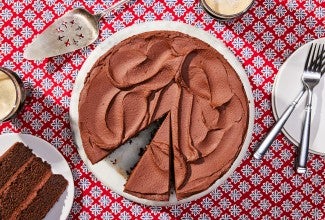Things bakers know: Bake your layer cakes in a sheet pan
For flatter cakes and customizable shapes, I always bake my layers this way.
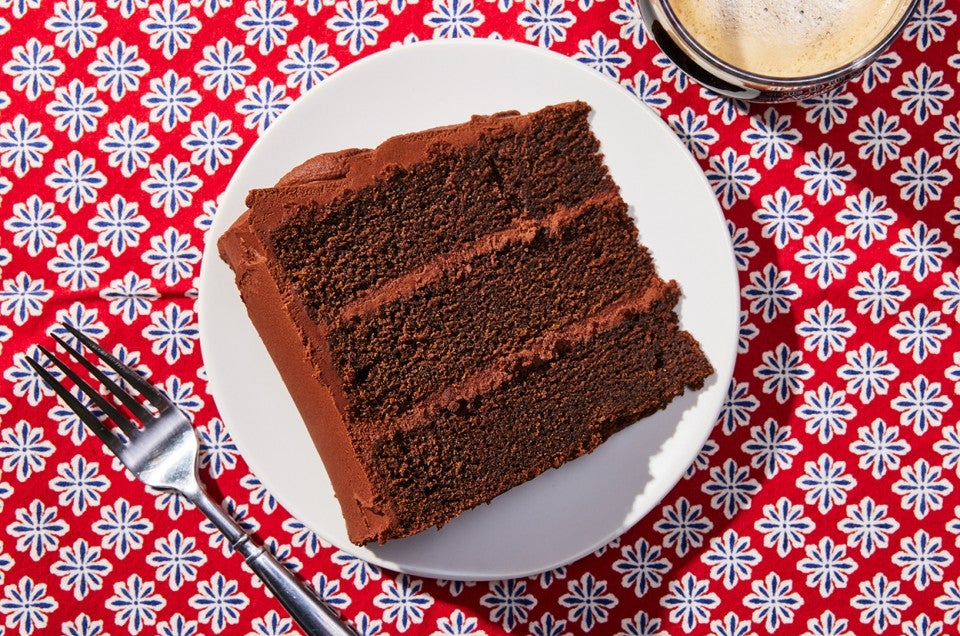

In 2019, I declared it to be my “Year of Cake.” I’m really more of a pie person, you see, and while I’d always made cakes that were fine, I’d never made cakes that I felt were truly great. So I gave myself a whole year to crack the cake code.
Armed with a copy of Christina Tosi’s All About Cake, I stocked my pantry with cake flour, parchment, and lots of vanilla extract, and got baking. I reveled in the simplicity of naked cakes (so easy for my clumsy hands to decorate!) and recognized the power of a good offset spatula. But there was one Christina Tosi trick that completely changed the way I made layer cakes: Instead of baking them in round cake pans, I often use a half-sheet pan instead.
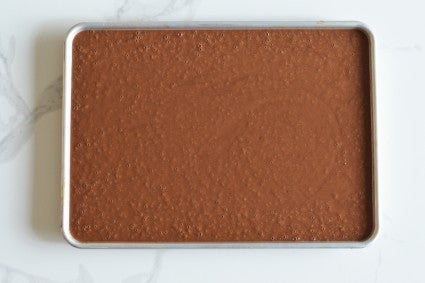
Christina Tosi’s not the only baker who loves this method: Pastry chef Natasha Pickowicz also includes this tip in her forthcoming cookbook, More Than Cake. “You bake a cake in a round pan, I don’t care what kind of cake batter it is, it will dome,” she says. Some of that doming can be ameliorated by using cake strips, but you’re still liable to have to do some leveling, which can be more difficult than it looks. By comparison, says Natasha, “You bake your cake layers in a half sheet tray, you’ll get a perfectly flat cake.” No finicky leveling required.
Another advantage of using a half-sheet pan is thinner layers: Instead of imprecisely splitting cake layers for filling — a tricky task that Natasha admits to disliking — the shorter half-sheet cake can just be stacked and filled as is.
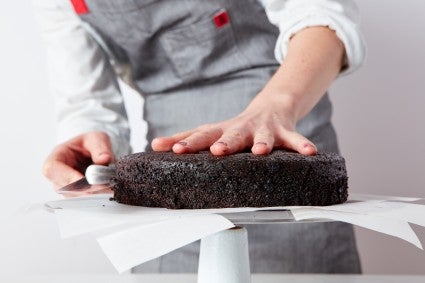
She also loves the versatility of a half-sheet pan. “It’s like a piece of construction paper. You can cut [the cake] into any shapes and sizes that you want.” This means you can make any sized or shaped cake without having to worry about stocking multiple pans or baking in batches. When I make cakes, I simply use a piece of parchment as a guide (I can go with a default 8" round or cut it to be as small as 4", or opt for rectangles or squares) and use a sharp knife to cut out my layers.
Of course, cutting out round cake layers from a rectangular sheet of cake can leave you with some trim. Christina Tosi has a solution for that, too: She uses a cake ring and presses large pieces of leftover cake scraps into the mold to act as the bottom layer in a three-layer cake. Beneath layers of cake, filling, and frosting, no one can tell that this scrapbook of leftovers wasn’t originally one single piece of cake.
There are more options: For instance, Camilla Wynne recently shared her method for making rum balls out of any pastry scraps. Leftover cake is perfect for this, and now I always crumble my cake scraps into a bowl, add a good glug of rum, and mix until I have a fudgy, sticky mass that I roll into small, truffle-like shapes. These can even make a lovely decoration for the final frosted cake (I’ve done it!). Alternately, baker Michelle Polzine includes a tip in her book Baking at the 20th Century Café to dry out cake scraps in a low oven, then blitz in a food processor or crush with a rolling pin to make crumbs that can be used as a moisture barrier beneath fruit in pies or as a garnish for the tops of cakes. Crumbs can be stored in the freezer until ready to use.
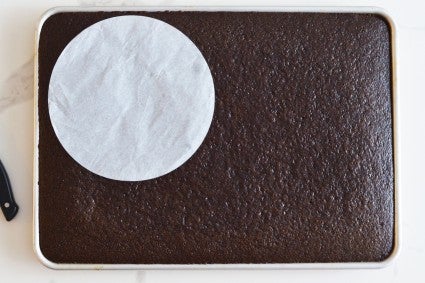
Any layer cake recipe that yields three 8" or 9" cakes will work in a half sheet pan with no adjustments needed. If the recipe yields two 8" to 9" cakes, I increase the recipe by 1.5 (if you measure by weight, rather than volume, this is a cinch).
Grease the half-sheet pan and line it with parchment. Pour in the batter, spread it into an even layer using your offset spatula, then bake as directed in the recipe. I always start checking at least 10 minutes before the bake time listed in the recipe, since the cake tends to be thinner and bake more quickly. Use our tips to tell if your cake is done baking.
Once baked and cooled, take a piece of parchment in the shape of your desired cake layers (for instance, an 8" round) and use it to trace out the layers using a sharp knife. If you’re making a three-layer 8" cake, cut two full circles and then two half circles, which you will fit together to make the third layer of cake — use this one on the bottom. Remove from the pan then stack, fill, and frost.
One final tip: Because the cake is cut out with a knife instead of baked in a round cake pan, the edges can be a little rougher and have more exposed crumbs. For this reason, using a crumb coat is extra important for achieving a perfect frosted finish.
Step up your cake game with our Cake Baking Guide.
Cover photo (Chocolate Stout Cake) by Rick Holbrook; food styling by Kaitlin Wayne.
